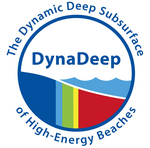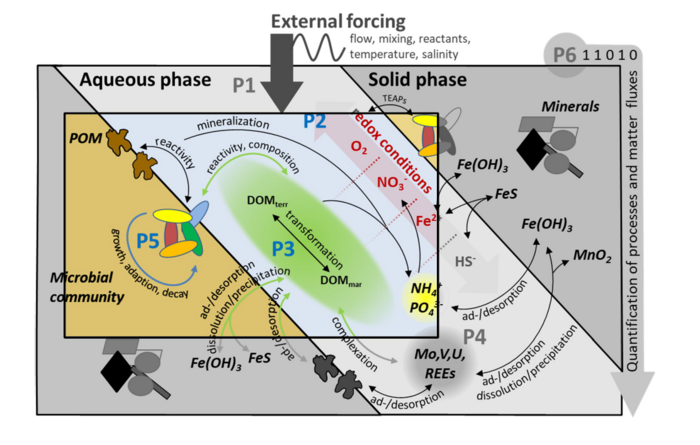
Principal Investigators
Prof. Dr. Thorsten Dittmar
Institute for Chemistry and Biology of the Marine Environment
Carl von Ossietzky University of Oldenburg
Dr. Jutta Niggemann
Institute for Chemistry and Biology of the Marine Environment
Carl von Ossietzky University of Oldenburg
Dr. Hannelore Waska
Institute for Chemistry and Biology of the Marine Environment
Carl von Ossietzky University of Oldenburg
P3: Organic matter: Abiotic transformations and microbial interactions
Subproject P3 will study the sources, composition and transformations of organic matter as the main drivers of biogeochemical processes in the deep STE. We hypothesize that the transient character of the deep subsurface is crucial for the turnover and molecular transformation of organic matter through interacting abiotic and biotic processes. A combination of targeted laboratory experiments and field work will be applied in order to identify and characterize (1) potential endmembers of organic matter supplied to the deep subterranean estuary, (2) abiotic changes of dissolved organic matter (DOM) quantity and composition occurring at temporally and spatially variable redox interfaces, and (3) degradation and transformation of DOM by microbial communities. Detailed molecular information will be used to decipher linkages between DOM and microbial community composition and activity. Organic matter composition will be characterized by state-of-the-art molecular approaches such as ultrahigh resolution Fourier-transform ion cyclotron resonance mass spectrometry (FT-ICR-MS) and ultra-performance liquid chromatography, and complemented by analyses of stable and radiocarbon isotopes. Molecular proxies will be established as diagnostic tools for specific biogeochemical states of the deep subsurface and the resulting microbial niche space. Results from P3 will populate the coupled reactive transport hydrogeological model (P6) with reactivity terms and provide information on sources and age of DOM (P1). Molecular data acquired in P3 will be interpreted in the context of microbial community data (P5) and distribution of key trace elements (P4), and will contribute to a mechanistic understanding of microbial respiration (P2).


